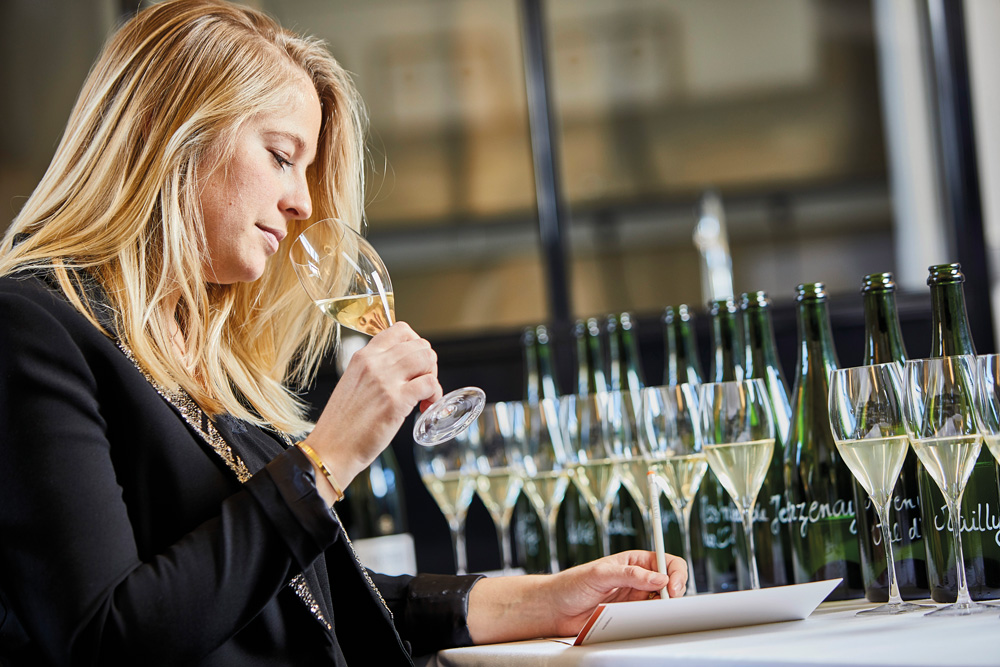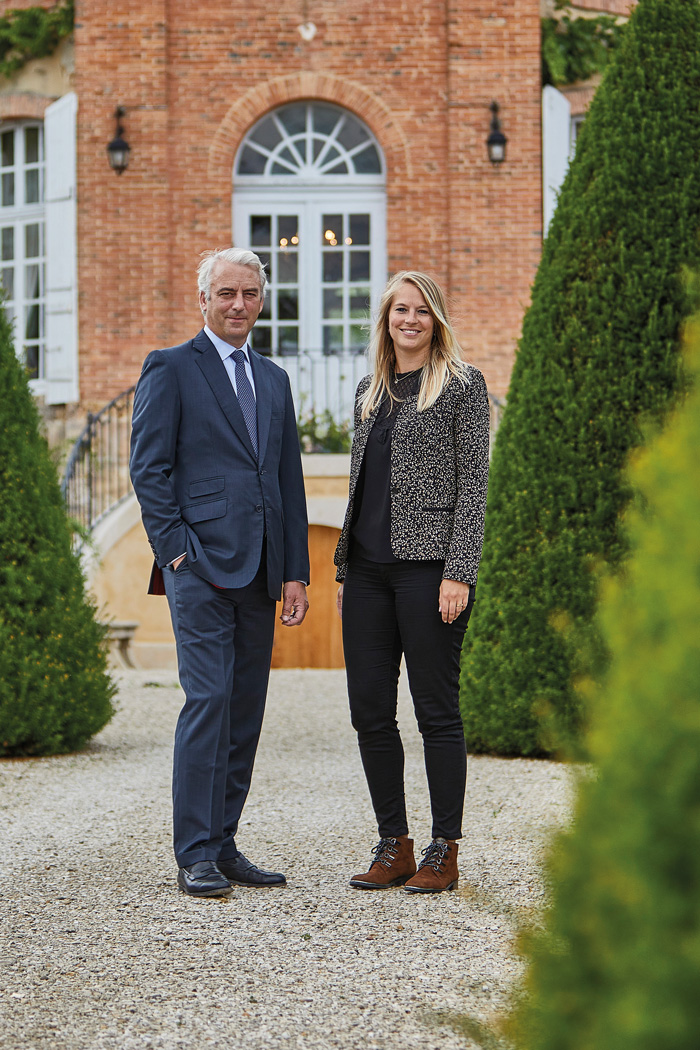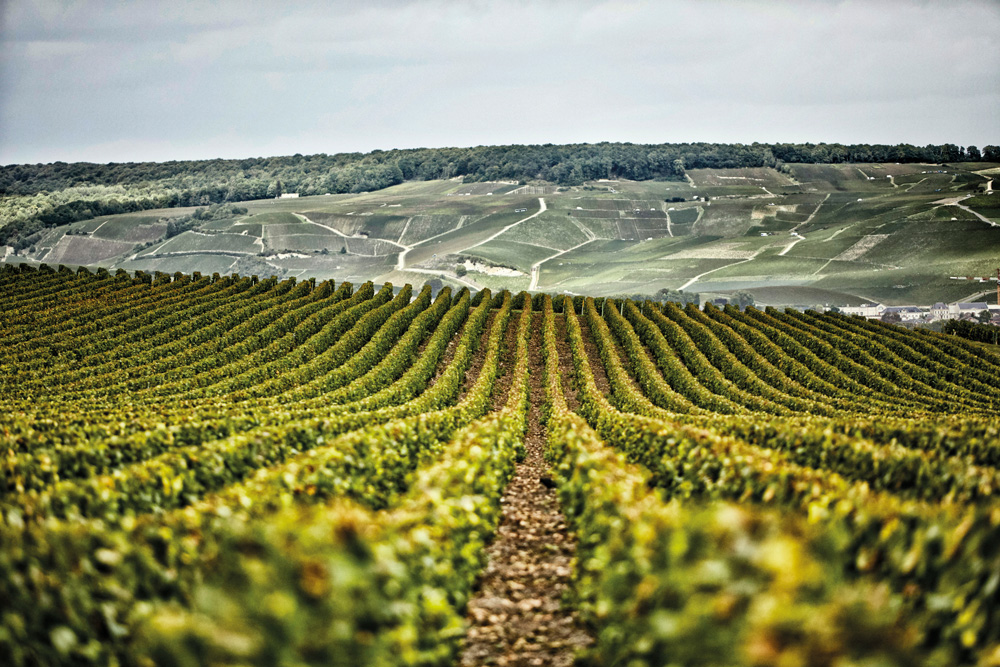There are few things rarer in the Champagne region than a female chef de cave (cellar master), but a new generation of determined women are changing all that.

In April this year, Alice Tétienne took over the role at Champagne Henriot from departing Laurent Fresnet, who spent 13 years at the house. More unusually, Tétienne will be overseeing both vineyards and winemaking, two roles which are usually separated, but which she qualifies in.
Gilles de Larouzière, president of Champagne Henriot and representative of the 8th generation of the Henriot family, explains, “Alice clearly stood out. The first meeting we had, we carried out a long conversation about viticulture, quality and sustainability.
I immediately understood she was able to articulate a clear and thorough vision of her work and could bring Henriot a step further on both viticulture and wine.” Larouzière adds that the appointment brought about “special thought” for the widow Apolline Henriot, who founded the house in 1808 after the death of her husband Nicolas.
HAPPIEST IN NATURE

Born in Champagne, or as Tétienne describes, “immersed in the vineyard since being a baby,” she started studying viticulture as it was her first passion. With a Bachelor’s in Vine Sciences and Master’s in Vine and Terroir, and finally a National Diploma of Oenologist in Reims in 2015, she worked at Centre Vinicole Nicolas Feuillatte and Maison Krug before being tapped for Henriot. Currently living in the heart of the vineyards of Apolline Henriot in Mailly-Champagne, Tétienne is as attached to her region as she could be. However, her biggest satisfaction to date has been receiving the Cellar Master of the Year 2020 award by Les Trophées Champenois in Epernay. “I had the feeling of being officially part of the community acting in favour of Champagne,” she confesses.
Our chat turns to what she’s been doing, especially on the challenging 2020 vintage. On the past few months pre-harvest, she describes, “On each single day, we would visit our partner growers to define together the best date for the harvest and of course we do the same for our own vineyard. We visualise, perceive and need to feel the evolution of the grapes from each terroir and micro-terroir.”
The set-up of pre-harvest plot tours was particularly auspicious in 2020, in order to harvest the grapes with the organoleptic requirements of the house. The three main parameters taken into consideration are sugar, acidity and aromatics – all which did not agree, in various possible patterns, right up to the beginning of the harvest. Added to that, the need for social distancing and wearing of masks. The rules were also reversed for this harvest: the Côte des Blancs which began after the Montagne de Reims, Chardonnays which were slow to ripen, and early Pinot Meuniers.
A HOUSE OF LIGHT
Each Champagne house has its own style, and Henriot’s has passed down uninterrupted through eight generations. “A distinctive style for more than two centuries now that is precise, virtuoso and luminous. We look for generosity in all the blends we make. And we are lucky to have such a wide grapes sourcing.
This ensures no compromise on the quality standards of our Champagnes. Also for historical reasons, Chardonnay is a major piece in our creations that gives the elegance to our distinctive style,” says Tétienne.
The newly released Cuvée Hemera 2006 is a case in point. The prestige cuvee, which was launched with the 2005 vintage for the maison’s 210th anniversary in 2018, is always made with the same blend of their six founding Grand Cru villages: three in Côte des Blancs with Chouilly, Avize and Le-Mesnil-sur-Oger and three in Montagne de Reims with Verzenay, Very and MaillyChampagne. What differs is their expression depending on the vintage. However, the 2006 was balanced, and in her words: “Each Terroir was truly expressive this year: the foundations provided by Verzy were only stronger. The elegance of Verzenay was expressed with class and distinction. Mailly-Champagne’s expression undoubtedly raised the tone. Chouilly’s generosity proved abundant. The icy profile of Avize has become polar and the brightness of Mesnil-Sur-Oger almost blinding.”
As Tétienne delves deeper into her role as both winemaker and vineyard manager, the task of maintaining the quality standards and perpetuating the house style will fall squarely on her young shoulders. “A cellar master is a scientist of wine first.
For vineyard management, this is the same. But the real magic happens when we open our heart and emotions. Thus, both are needed, heart and brain. And experience plays also an important part,” she muses. “Furthermore I am really willing to make things evolve in the vineyard. In fact, the roots of Maison Henriot are in the vineyard. From a vintner’s family, Apolline Henriot had a particular attachment to the vine and the soil. This passion is written in our family roots. In 1808, she founded Champagne Henriot that is still independent today. This allows us to work with a free spirit the way we like.”
Looking ahead, she counts the recent launch of “Alliance Terroir” in October 2020 as an example of the commitment to their investments in the vineyards. “This is a working collaborative group with the ambition to preserve the Champagne terroir and adapt the way we conduct our vines. This new approach is not just about certification, but rather about deep analysis in order to adapt with the evolving times such as climatic changes. And our ambition today is to progress with this approach to preserve and reinforce the way we make our Champagnes. This drives me every day at work.”
